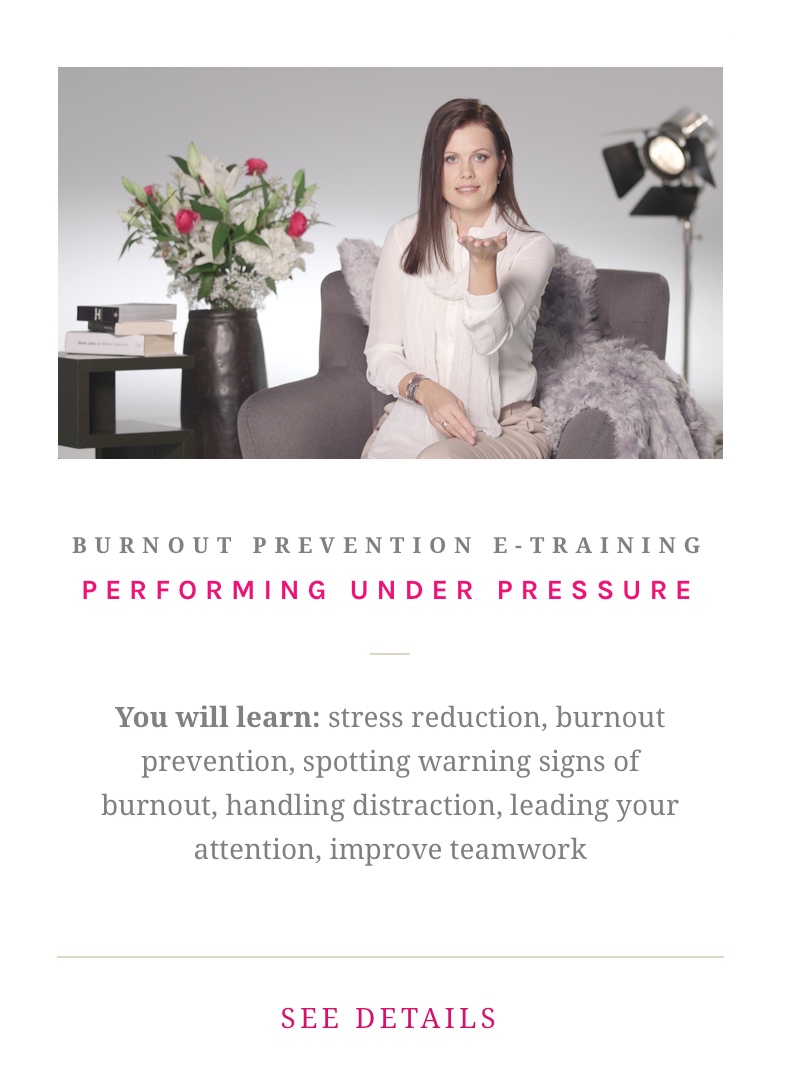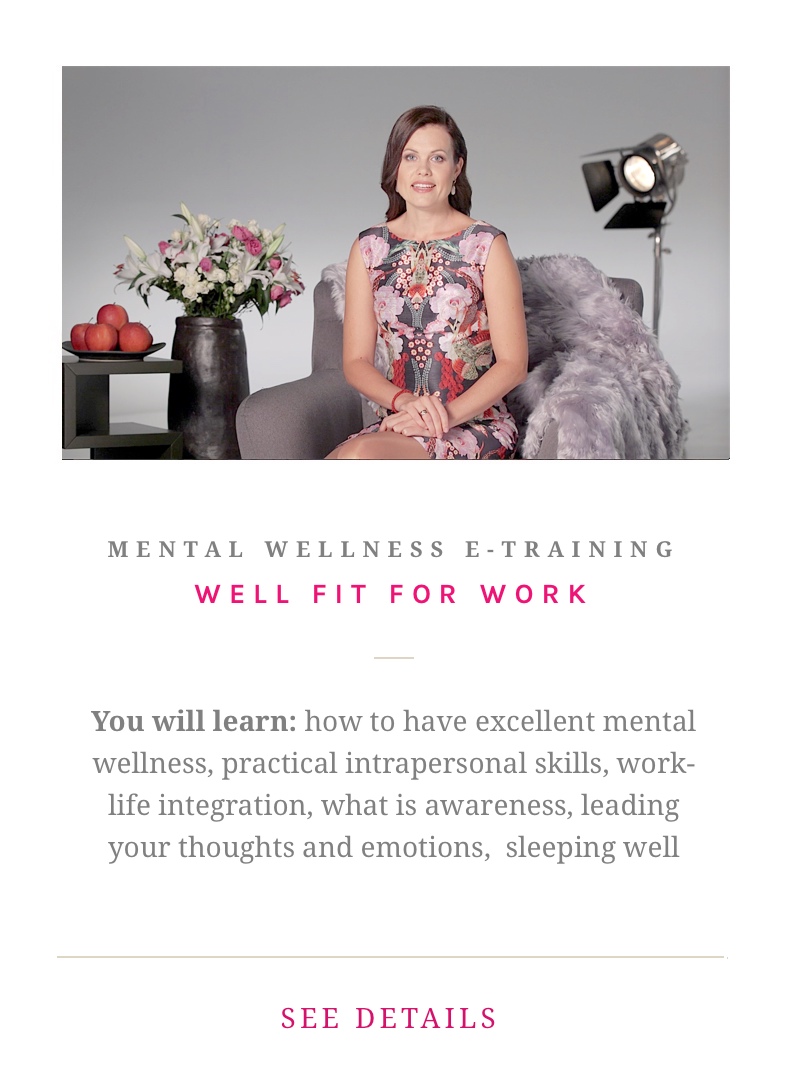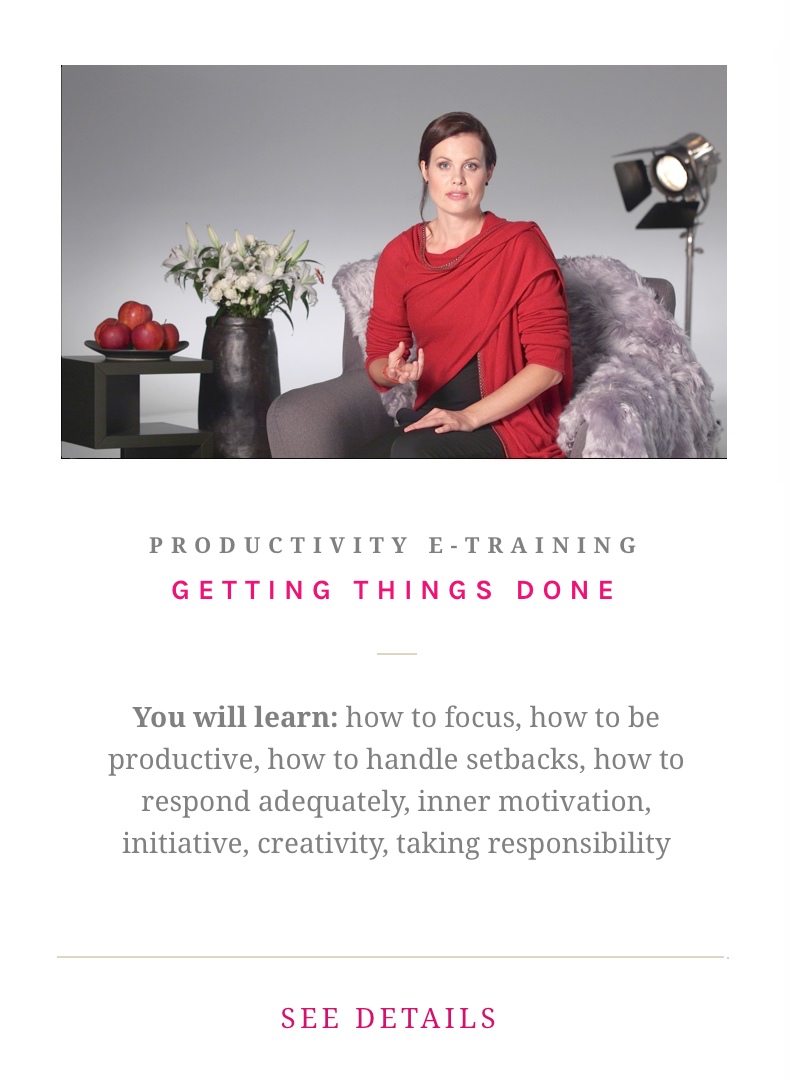Why Fastness is the Problem for Your Mental Health
In modern life and workplaces, speed and fastness are often praised and even encouraged. We live in a society that seeks faster decisions, faster growth, faster communication, and faster action.
In the middle of being busy, we have lost our ability to keep a calm mind. It is your calm mind that allows you to use sensing, awareness, and be fully present in your body.
Many leaders and employees believe that fast mental processes equal progress. That is a big lie, as is the hope that there is a single pill out there to fix your mental health issues.
The fact is, only a calm mind is capable of conscious decisions. A mind that is busy with a procession of thoughts and emotional reactions is lost in inner turmoil and will experience stress and burnout.
In work situations, the hidden cost of constant fastness is often overlooked, and this causes a decline in mental health. The drive to depend on a racing mind gradually erodes resilience, inner clarity, and mental wellbeing.
Even more, it also harms your physical body. Both mind and brain need training and relaxation to sustain high performance.
A growing body of evidence suggests that when your mind is constantly rushed, pressured, and overstimulated, you lose access to the very qualities that define excellent leadership and sustainable performance.
The ability to innovate, the strength to remain calm and perform well under pressure, and the wisdom to make sound long-term decisions all diminish when life and work run only as a constant, fast-paced rally.
Let's explore why inner speed or mental fastness is one of the biggest hidden threats to your mental health, and how proactivity, mental wellness training, and intentional slowing down of your racing mind can help you secure a calm and resilient mind.
The Illusion of Productivity in Fastness
At first glance, moving fast appears efficient. You react quickly to emails, jump from one meeting to the next, and multitask across projects. As a result, your calendar is full, the day feels busy, and the appearance of progress is strong.
However, a relaxed mind acts differently from a rushed mind. When your brain is overloaded by speed, it is less capable of deep focus. Thus, your thoughts become fragmented and disrupted. Negative emotional reactions rise more easily and are often overwhelmingly strong; as a result, your ability to notice and discern diminishes.
To a stressed mind, small issues and problems seem larger than they are because you are not giving yourself the time or inner space to process situations calmly and respond adequately.
It is a conscious response that is, in essence, a conscious choice. Such a response has zero reactivity. In fact, reactiveness and responsibility are on opposite ends of the scale. A fully present person chooses a conscious response; a subconscious mind has a triggered reaction.

In short, your inner, mental speed can trick you into believing you are productive, while in reality, you are merely reacting.
All your reactions are always subconscious and consume your energy; thus, your mind and body become easily depleted. And this often leads to stress, burnout, anxiety, and even more serious (mental) health issues.
However, when you are present, calm, and respond adequately based on your excellent mastery of intrapersonal skills, your mind doesn't get depleted. You still need time to restore yourself after the action you take, but as you act from inner calmness, you lack inner tensions.
It is vital to understand that the loss of inner calmness and excellent mental wellness always undermines performance and productivity.
The Mental Cost of Fastness
Constant mental speed leads to fatigue and has several negative consequences for your wellness:
- Overthinking and rushing fuel repetitive thinking loops, often focusing on problems rather than solutions.
- Emotional and mental inner reactivity makes you lose your natural inner calmness and, in turn, you are more likely to react impulsively to colleagues or staff. It is a paradox that calming down your mind allows faster and more purposeful external action. This is due to calm focus and understanding of what you do.
- Loss of creativity and trust in your own intuition. Both creativity and intuition originate from consciousness and thrive in inner calm spaciousness: busy thoughts and emotional turmoil literally block access to creativity and intuition.
- Reduced resilience influences your health. A mind always in high gear can't rest and recover effectively. A busy mind can cause the physical body to tense u and reduce your ability to perform well under pressure.
- Decision fatigue appears when you constantly think and can't relax. The faster you push thoughts, the less actual inner strength you conserve for truly strategic choices.
The listed costs above directly affect your work and business outcomes.
A stressed leader influences the culture of the whole organization; a stressed expert or project manager influences group dynamics. Teams quickly notice when their leader is reactive, tense, or distracted.
Fastness in work culture spreads like wildfire, reducing overall productivity and trust. Often, such inner mental speed leads to superficiality and toxic human relations.
Why Slowing Down Builds a Fit Mind
A fit mind is like a fit body; it works well when it is trained, resilient, and adaptable. Just as physical training requires both exertion and recovery, mental wellness training is based on calming your mind.
The only real complaint some of the people we have trained is that they expect a quick fix from our trainings. Instead, they get a path that slows their mind down and allows them to restore their inner peace. Those who get it see improvement in their life and work and rate our relaxing training highly.
|
Slowing down your thoughts and replacing your inner reactions, and taking conscious responsibility is the key to mental wellbeing and productivity.
In the recovery phase, your brain needs to restore clarity and energy. Otherwise, stress will turn into burnout, and burnout in the final phase has an 86-92% overlap with depression. Also, worry and anxiousness of the mind tend to turn into anxiety disorders.
It is wise to remember that you aren't your thoughts and emotions. Both are great internal tools when used consciously for your own benefit.
From the perspective of a calm mind, thoughts and emotions are tools that you lead with your awareness. Also, awareness itself is something you can lead with awareness. That is why our focus is on training awareness-based intrapersonal skills.
When you calm your mind, you are not losing time. You are gaining access to more perceptive awareness. This improves access to intuition and creativity, and opens up a relaxed and conscious way to lead your thoughts and emotions. You no longer depend on reactivity and fears or desires, but instead make calmly conscious decisions that are in harmony with your True Self and actual surroundings.
A relaxed mind notices different patterns more clearly, solves problems with more creativity, and engages with people more effectively. A calm mind is empathetic, kind, and solution-driven.
Leaders and employees with calm minds can use their awareness, imagination, thoughts and emotions deliberately, as their intrapersonal tools. As a result, they often achieve more in less time. This happens because their actions in inner calmness are more precise, considered, and sustainable.
Proactivity versus Reactivity
One of the greatest shifts you can make for your mental health is moving from reactivity to proactivity.
Let's observe the terms:
- Reactivity is living in constant fastness, emotionally and mentally reacting to emails, calls, and requests without pause. Re-acting is, in this case, in essence a repetition of old habitual patterns without really seeing the uniqueness of the present situation.
- Proactivity is choosing what truly matters in the now, focusing on high-impact actions that make a positive impact, and setting boundaries that protect your mental wellness, your health, and your actual business decisions. Pro-activity is taking action before things become busy, hectic and no longer postponable.
Proactive action is healthy, as it begins with an inner pause and observing what I can do right now with what I have to make things better for me and others around me. It is the opposite end of reactivity, which is centered around feeling guilty or blamed (even if no other person blames you for those things).
Only when you create calm inner space in your mind can you see what truly deserves your attention. This is why slowing down your mind is not a luxury but a (self-)leadership necessity.
Letting Go or Neutralizing Your Negative Emotions
Fastness often traps people in cycles of negative emotions. Rushing heightens frustration, amplifies stress, and leaves little room for emotional recovery. Over time, unresolved or suppressed negative emotions accumulate, leading to anxiety, stress, burnout, or even physical health issues.
Mental wellness trainings on this website teach you to slow down your thoughts and notice emotions without being controlled by them. By creating distance between you and your thoughts, you can let go of your inner negativity before it spirals out.
We recommend reading the book 'Practical Consciousness' by Ingvar Villido and applying the technique it presents to let go of negative emotions. However, what you learn in our e-courses and in the book (Dr. Helena Lass also teaches Practical Consciousness Courses in live format) works only when you calm down, take responsibility, and apply what you have learned.
In an upcoming training, we will also reveal a technique to neutralize your negative emotions. What matters right now is that you need to know, suppressing your emotions is never healthy and influences your health negatively.
There truly is no quick fix to stress, burnout, or mental illnesses. This is the simple and honest truth! You may not like it, but dealing with stress and burnout or mental illnesses is a long process. The more severe the problem, the longer it takes.
That is why we have developed a proactive mental wellness approach. Yes, it demands actual conscious action from your side, but when you apply what you learn, you have a calmer, more sustainable, and healthier mind.
A healthy mind again takes care of the physical body, keeps it fit and well.
Training your mind is a process that builds mental strength and reinforces resilience, allowing you to lead with a calm inner presence rather than suffering from mental and emotional turbulence.
7 Practical Ways to Slow Down
Here are 7 proactive strategies you can apply to shift away from fastness and build a calmer, more resilient mindset:
- Start your day in inner, and if possible, outer stillness.
Dedicate 5 to 30 minutes each morning to calming your mind before you take on daily actions. Personally, I do this every day for at least 20 minutes, if possible, for up to 60 minutes. Sitting in inner quietness is what allows you to set the tone of the day. My approach is just to sit quietly without distractions and look into the distance (with no object in focus). This sets the tone for a proactive rather than reactive day.
- Mono-task with intention.
Replace multitasking with focused attention and fully aware monotasking. Completing one task with full presence is far more effective than scattering your attention across many. When one task is off the desk, take the next one. In reality, multitasking doesn't work for most people, as we opened up in this blog. What matters is that you are impeccable in your current task, and then, when the task is completed, move on.
- Use technology deliberately.
Instead of being enslaved by constant notifications, set boundaries. You need to be the master of the tech you use! For example, check emails at defined times or after completing a present task. Use tech as your support tool! You know your work and tasks the best, make your own rules, and remember to take pauses without looking at social media or other apps on your screen. Your eyes also need a rest!
- Pause before taking on a new action.
A conscious (short) pause is what allows you to observe and choose a conscious response instead of automatic subconscious reactivity.
- When you feel challenged or speed is growing, take a few relaxed full breaths before taking action.
Notice where you are and what you need to do, and then make a conscious decision or ask questions if you lack data. Remember, a relaxed mind responds wisely; a rushed one reacts automatically. Reactivity has no inner freedom and often misses the uniqueness of the situation. However, a conscious choice gives you inner freedom and thus removes possible regrets.
- Build micro-pauses and longer pauses into your day.
Short breaks after every 1,5 hours of efficient action matter. Also, schedule a few 15-minute breaks throughout the day when you drink water, close your eyes for a few minutes, and change scenery (even if it is just walking around the office). Avoid eating at your work desk, if it isn't an emergency (in which case, eating is better than missing your lunch). Preferably, book your lunches and try to eat healthy and mindfully. Inserting pauses and moments of relaxation into your day supports mental reset and strengthens resilience against stress.
- Reflect at the end of the day and make a plan for the next day and then relax.
Spend 5 to 15 minutes considering what went well and what could be improved during your workday, and write down what you need to work on when returning to work. Reflection trains your mind to slow down and let go of unhelpful thoughts before rest. Writing down the tasks allows you to forget them until you get back to work. This allows you to relax and switch off.
Those 7 proactive strategies support your mental wellness and work results more than you might realize.
The Leadership Impact of Calming the Mind
When you train your mind to slow down, the benefits extend beyond personal well-being. A calm leader creates a calmer and more focused work culture. Staff members feel more supported and less pressured.
Teams perform better when they sense psychological safety and stability.
We recommend that every employer also secure a silent room, where people can just sit and relax. This allows for restoring inner calmness and health. For example, if you have a headache, you can take your pill and then go and sit in quietness for 15 minutes. You can use this room for breaks and drinking a glass of water or a cup of herbal tea (as you know, coffee is a stimulant for the mind) while relaxing.
Mental wellness in leadership is about enabling yourself and those around you to thrive. A relaxed, resilient leader who values calm and focused decision-making earns trust and cultivates an environment where innovation, creativity, and collaboration can flourish.
|
Conclusion: The Power of Slowing Down
Fastness may be celebrated in business culture, but it is a hidden threat to mental health. Constant inner speed undermines your ability to think clearly, stay resilient, and lead effectively.
True inner strength lies in calming and slowing down. The calmer your mind, the easier it is to act from inner clarity and make conscious choices.
Mental wellness training is your proactive path to building a fit mind. By slowing down your thoughts and letting go of negative emotions and managing stress, you strengthen resilience, improve decision-making, and create sustainable success for yourself and your organization.
The most effective leaders and employees aren't always the fastest. Instead, they are the calmest, most conscious, and most resilient ones. Slowing down your mind is the ultimate strategy for moving ahead with inner strength and clarity. This is what makes you a mentally sustainable and thriving person that others love to work with.

This blog post, video and pictures are shared by our Managing Director, Kaur Lass





